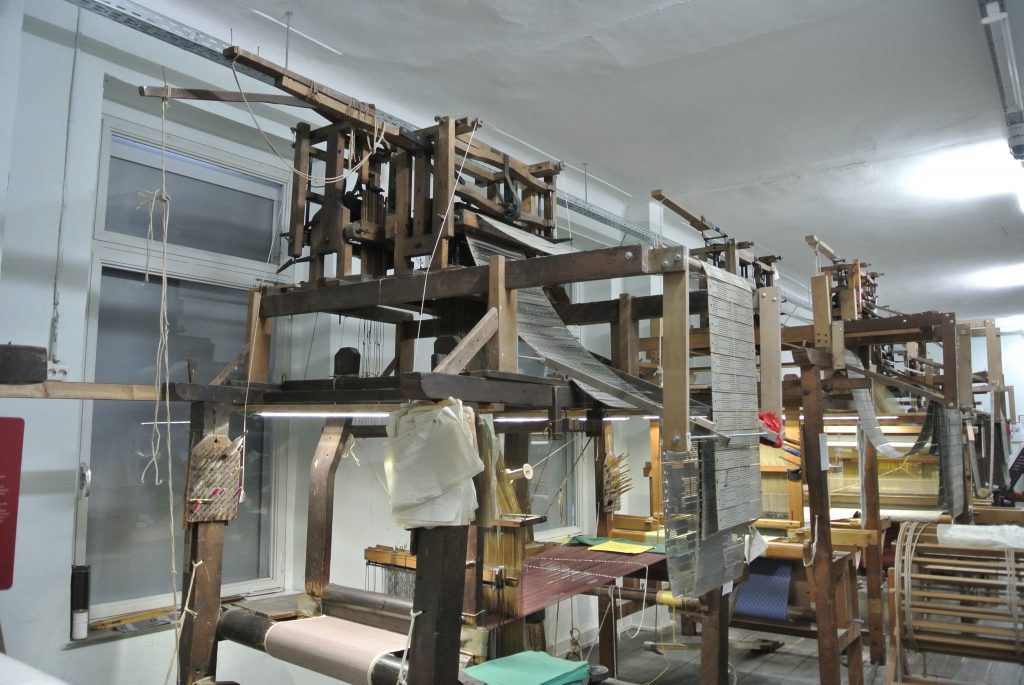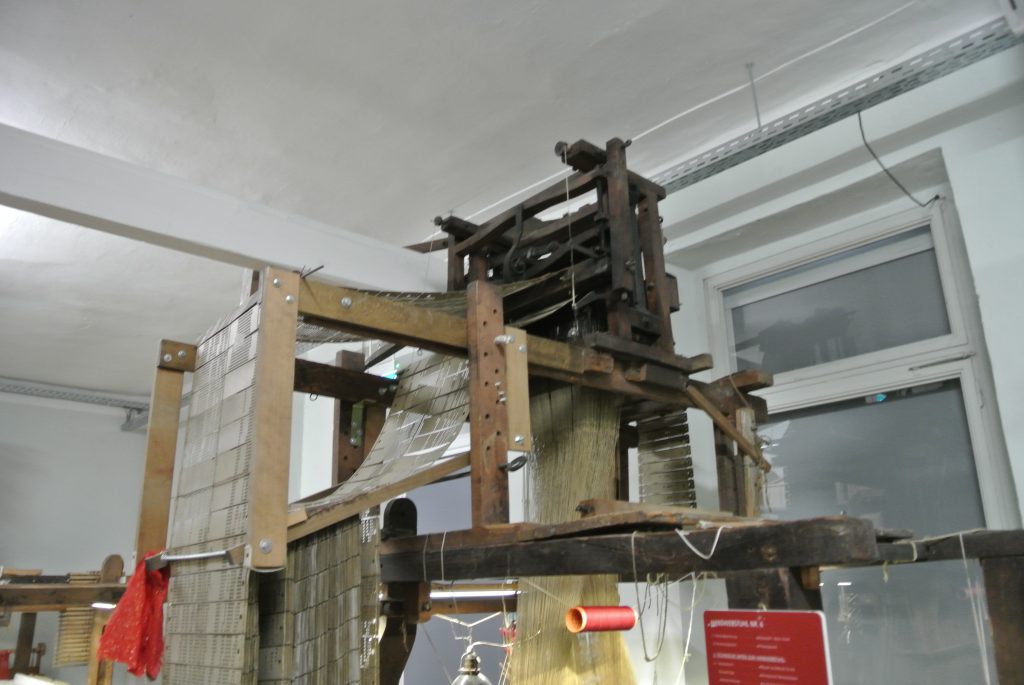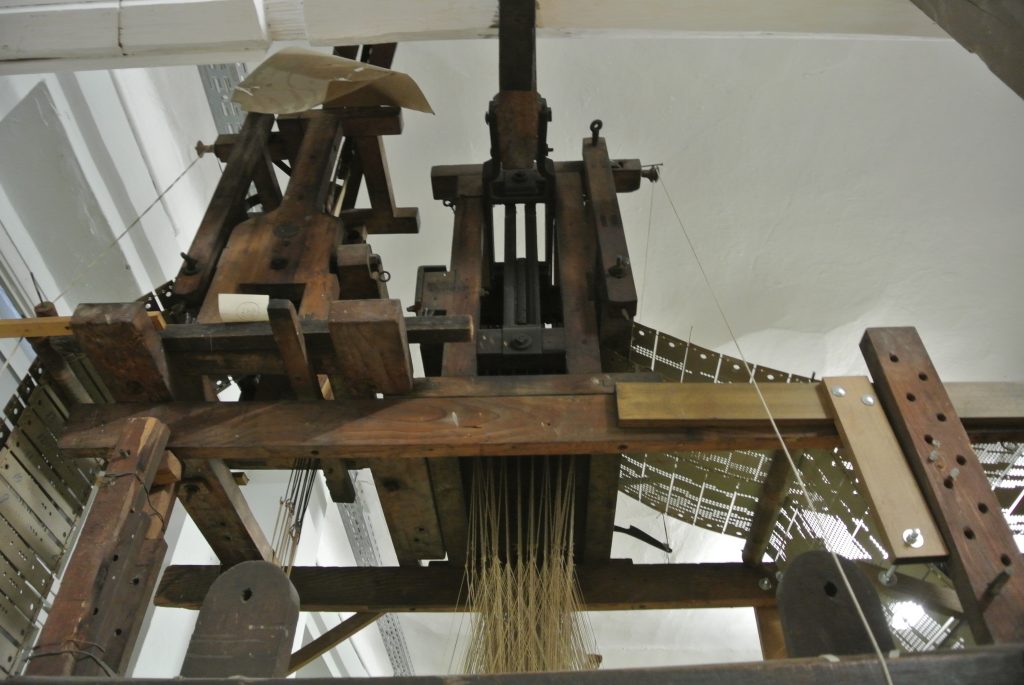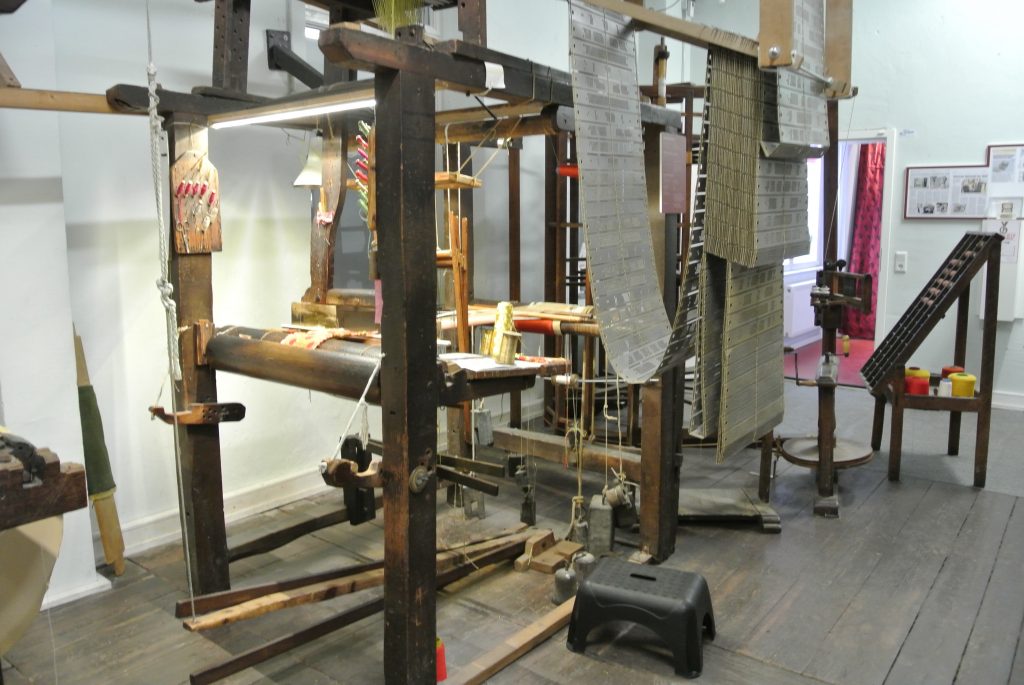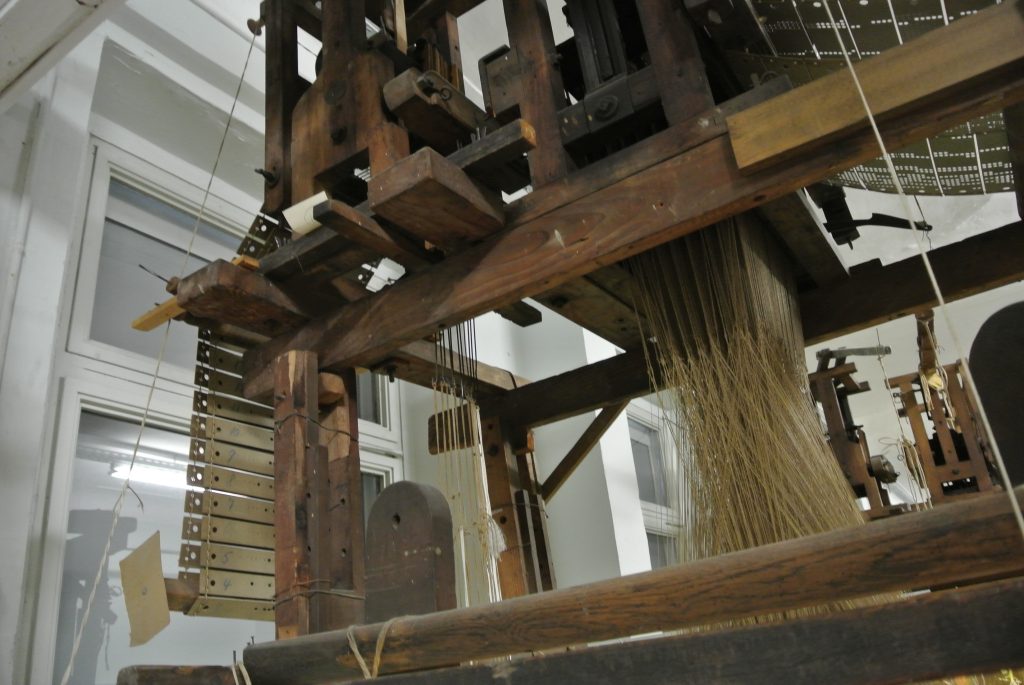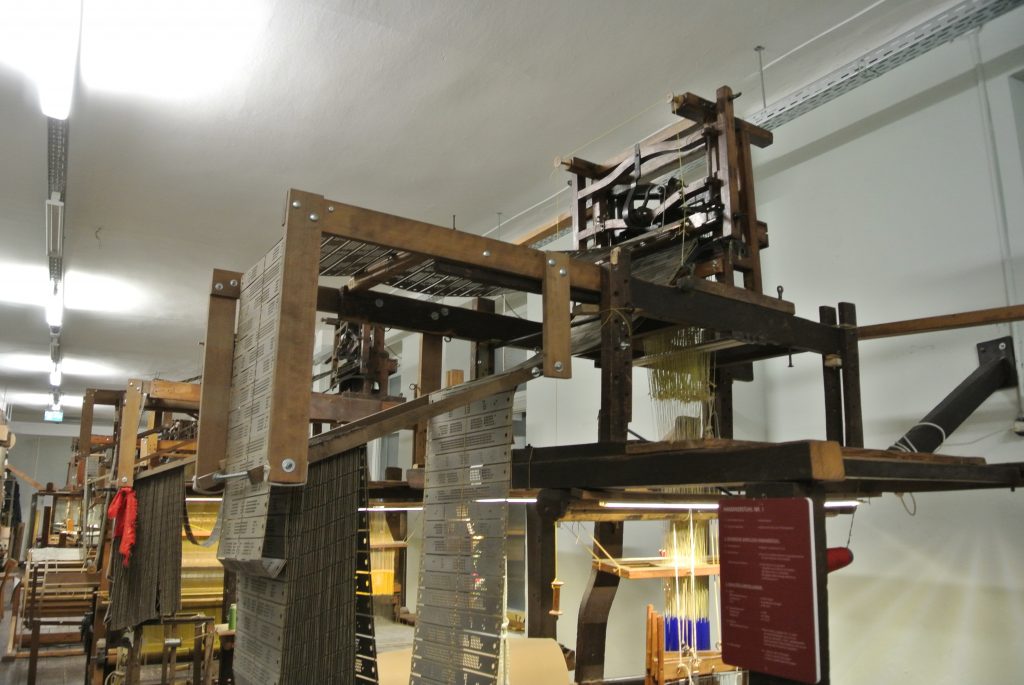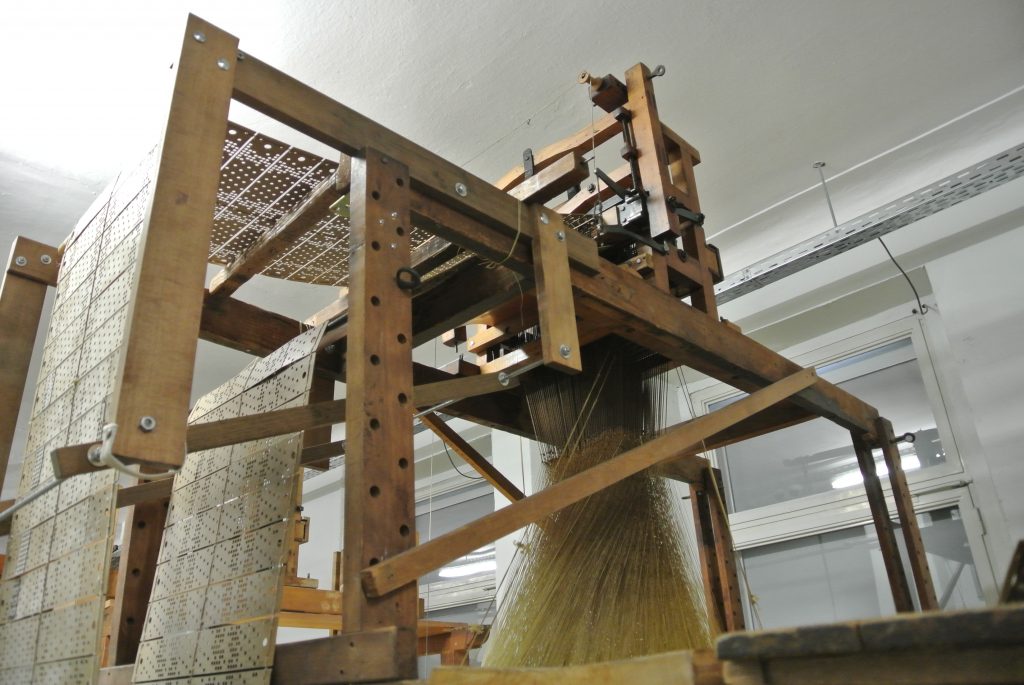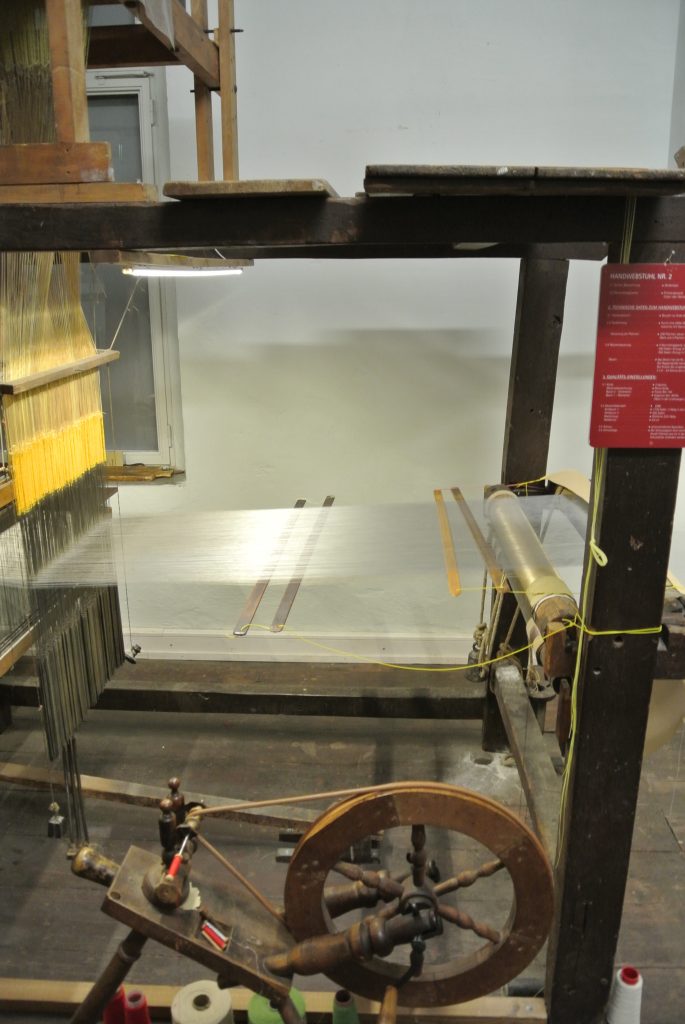Training material
Understanding Silk Weaving
Weaving is a way to fasten multiple parallel threads that are extended by tension with a perpendicular, interweaved and much longer thread. Most types of weaving require a minimum of equipment. Machinery introduced over time aims to ease and accelerate the process of weaving.
The yarn that comes from the spinning mill is rewound onto the warp beam of the loom before being used for weaving. In warping, the warp threads from the warping creel that have been sorted by the gathering reed are wound onto the warping drum. After warping, the spooled warp threads are wound onto a large metal roll, the warp beam of the loom.
A loom is any device that holds the warp threads at a reasonable tension and facilitates the interlacement of yarn. A shed is the area formed when some, but not all, of the warp threads, are lifted. When the weft thread is passed through the shed, it is over some threads and under the rest. The basic mechanism that forms this shed is the heddle. A heddle is a hole that the warp threads pass through. When the heddle goes up, the warp thread associated with that heddle also does.
Passing a string through a heddle is a task similar to passing a string through a needle. Thus, setting up the threads through the heddles is a tedious and time-consuming task. It is thus important to perform it as scarcely as possible. Estimation of thread quantities is an important part of loom preparation. The weaver must be able to repair a broken thread so that passing the string through the heddle is avoided.
Depending on the way of creating tension for the warp threads, different kinds and types of looms have been invented, i.e. the blackstrap loom, the drawloom, or the conventional handloom where bars are attached to each thread to create tension.
Up to the invention of the heald, individual warps were lifted by fingers, to insert perpendicularly the weft. The heddle mechanized the lifting of warps. The upper heald frames are connected by a cord passing over a roller, and the lower heald frames are connected to treadles. By depressing one treadle, one heald frame is raised and the other lowered, separating the warp threads. This separation creates an opening, or the shed, that facilitates the insertion of the weft. Depending on which heddles are lifted in each warps different structures, or weaves, can be woven.
A way to introduce the weft thread was by hand. The weft is wound around a rod that is called pirn and, while it is interwoven through the warp, it is unraveled from the pirn. The idea of winding the weft yarn onto a stick that could carry it faster through the shed from side to side led to the development of shuttles.
Pressing the weft into place, firmly and evenly, across the width of the fabric is not easy to be performed by hand. This tool is required to be: (a) flat to be entered into an open shed, (b) smooth to glide easily along the warp threads, (c) firm so as not to bend under pressure, (d) long to reach across the warp and beyond to be held, and (e) bladelike and blunt on one side to reach deeply into the angle of the open shed.
These requirements led to the beater-in or batten, which for a sword-like appearance is called the “weavers sword” .
Weaving is summarized as a repetition of three actions:
- Shedding: warp threads are separated by raising or lowering healds to form a clear space where the weft should pass.
- Picking: weft is passed across the loom. This is implemented by hand, shuttle, air-jet, or rapier.
- Beating-up or battening: the weft is pushed up against the fell of the cloth by the beater.
Weaving Jacquard patterned fabrics
The Jacquard attachment is a device fitted to a loom that simplifies the process of manufacturing textiles with complex patterns. The machine was controlled by a “chain of cards”; that is some punched cards laced together into a continuous sequence. Multiple rows of holes were punched on each card, with one complete card corresponding to one row of the design.
Examples of looms with a Jacquard attachment is presented below:
To create patterned fabrics using a Jacquard loom, the fabric design is first sketched and transferred to squared paper. A skilled worker translates the design into punched cards, using a machine for punching cards . Each complete card represents one row of the weft pattern. The holes created in the cards encode the selection of threads to be lifted when the shuttle passes for that particular row, for the implementation of the pattern. Technically, the holes allow the hooks to pass through which, in turn, trigger the heddles to be lifted. Cards are laced together in a chain and introduced to the loom. The act of lifting some of the warp threads so that the weft passes only below those can be better understood when looking at a woven fabric, from both sides.
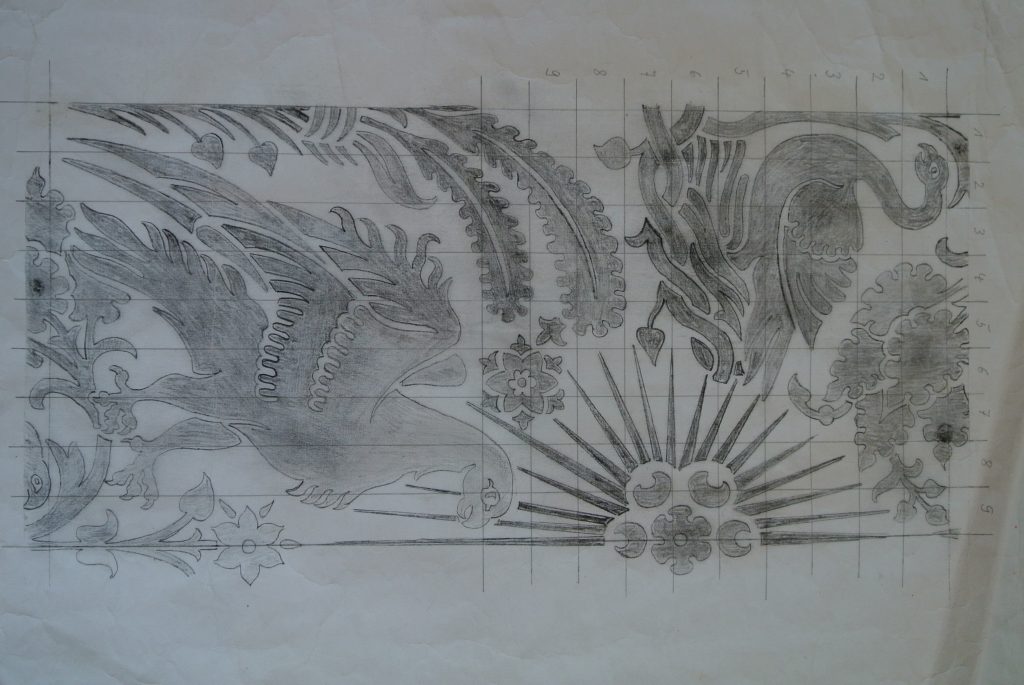
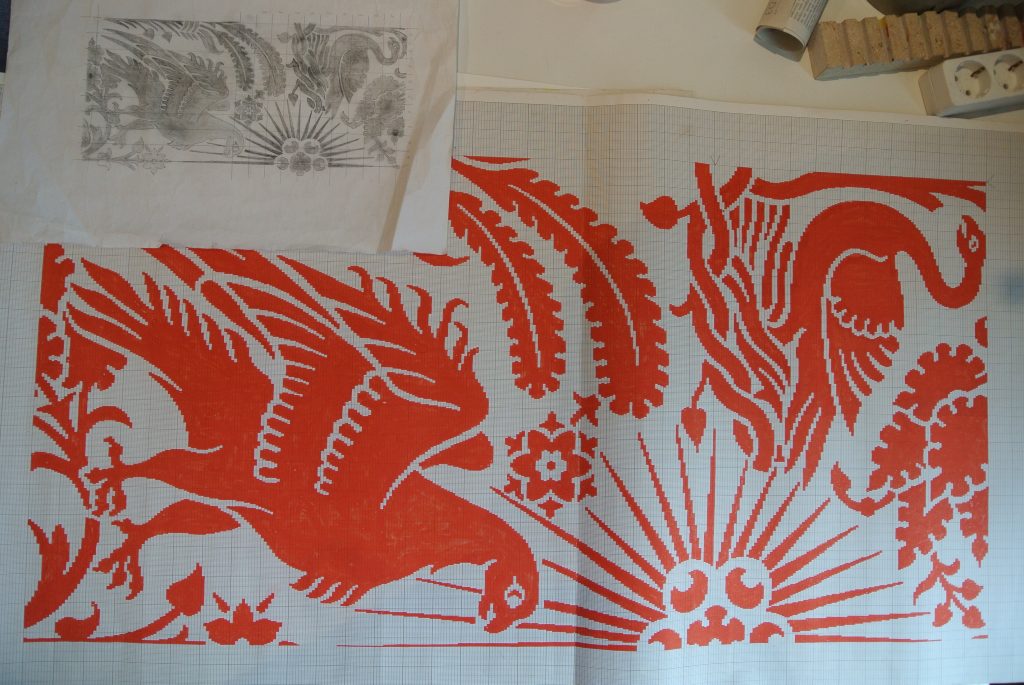
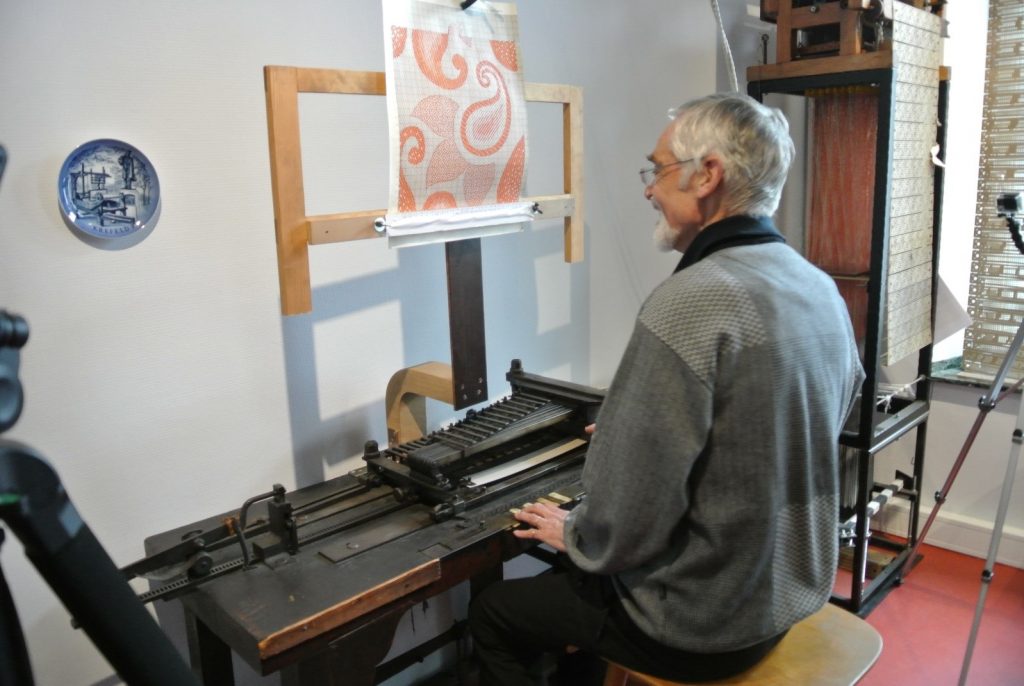
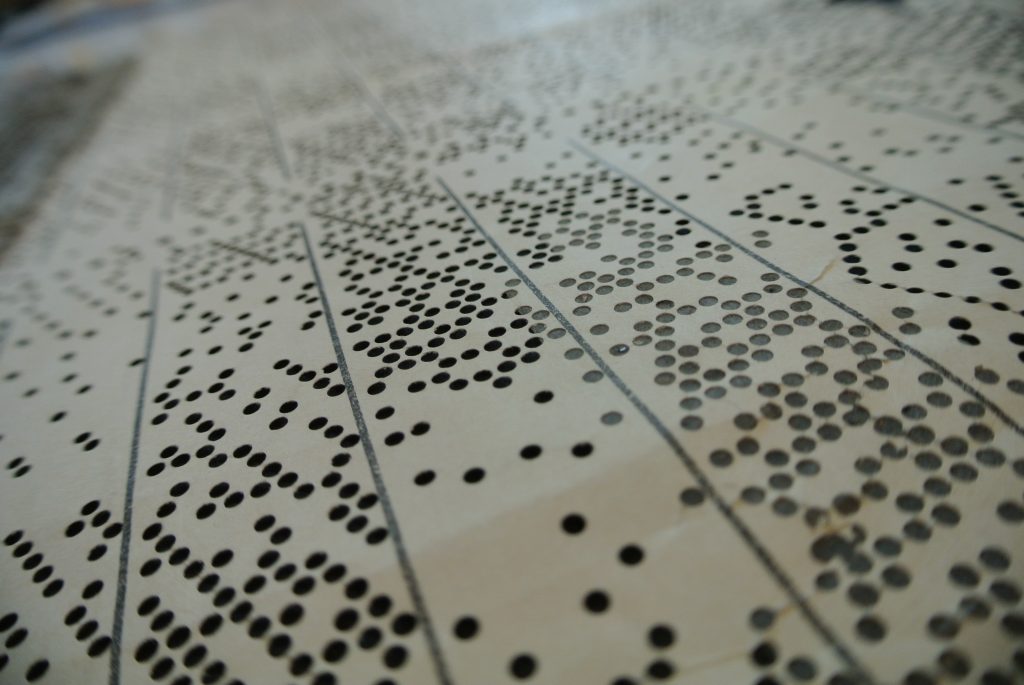
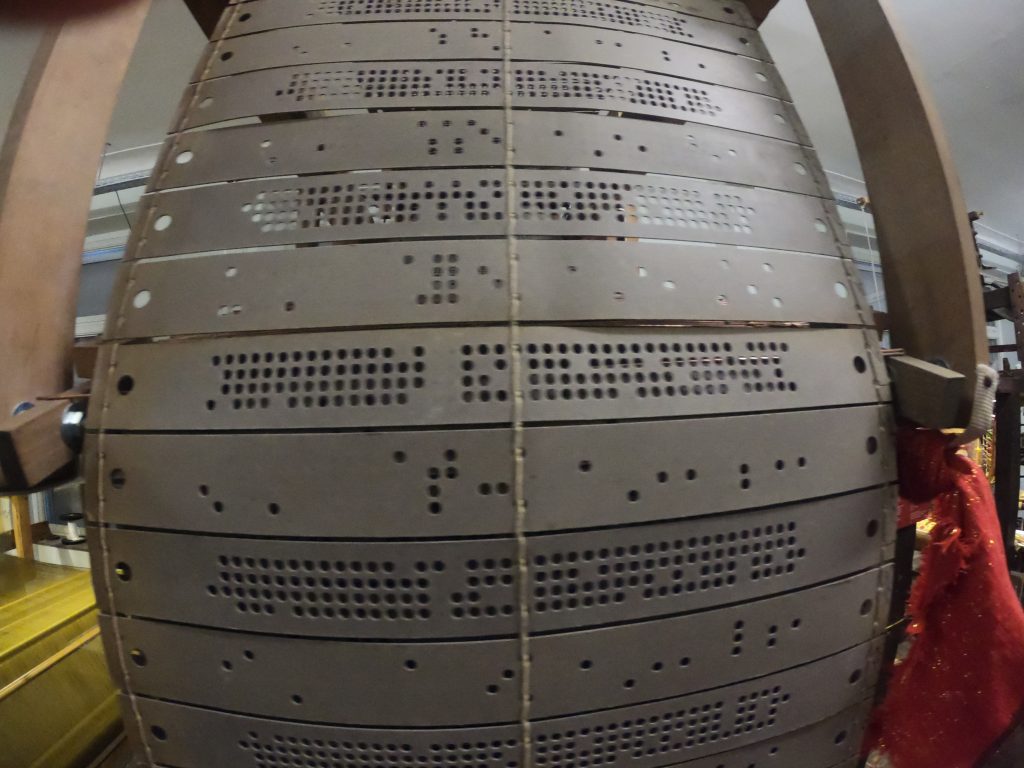
DCIM101GOPROGOPR8974.JPG 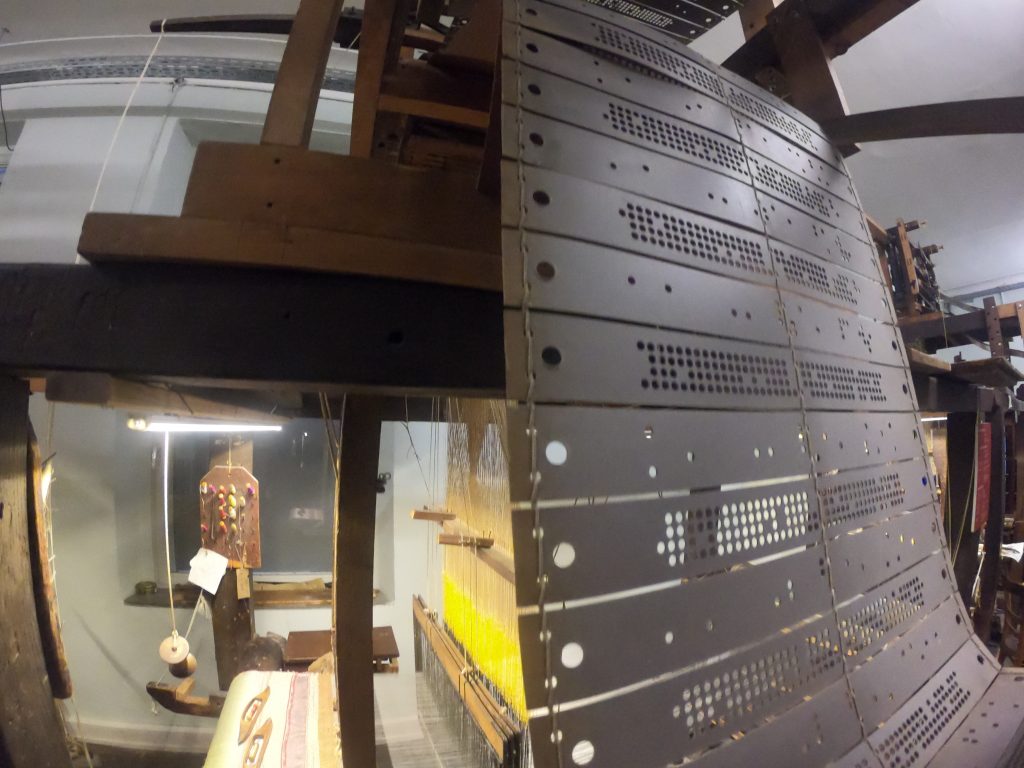
DCIM101GOPROGOPR8964.JPG 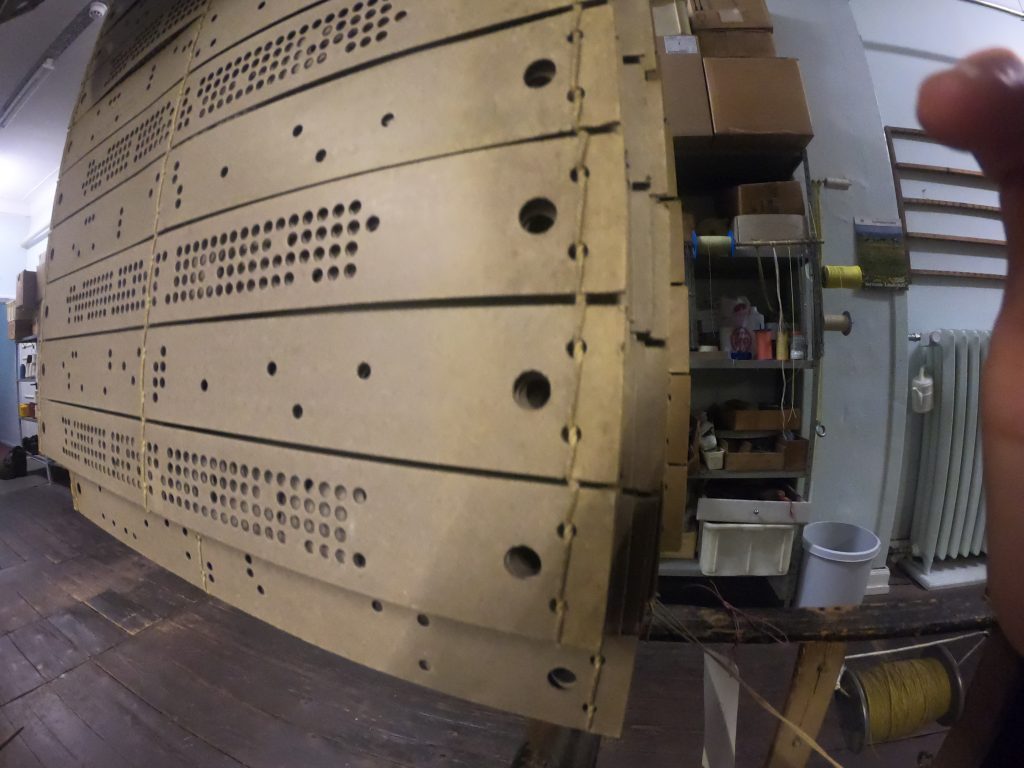
DCIM101GOPROGOPR8970.JPG

